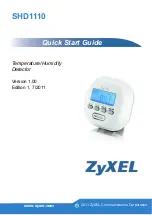
Chapter 2
DAQ System Overview
©
National Instruments Corporation
2-5
External Calibration
External calibration is a process to adjust the device relative to a traceable,
high precision calibration standard. The accuracy specifications of your
device change depending on how long it has been since your last external
calibration. National Instruments recommends that you calibrate your
device at least as often as the intervals listed in the accuracy specifications.
For a detailed calibration procedure for NI 6154 S Series devices, refer to
the
Isolated M/S Series Calibration Procedure
, which you can find at
ni.com/calibration
and selecting
Manual Calibration Procedures
.
Signal Conditioning
Many sensors and transducers require signal conditioning before a
computer-based measurement system can effectively and accurately
acquire the signal. The front-end signal conditioning system can include
functions such as signal amplification, attenuation, filtering, electrical
isolation, simultaneous sampling, and multiplexing. In addition, many
transducers require excitation currents or voltages, bridge completion,
linearization, or high amplification for proper and accurate operation.
Therefore, most computer-based measurement systems include some form
of signal conditioning in addition to plug-in data acquisition DAQ devices.
Sensors and Transducers
Sensors can generate electrical signals to measure physical phenomena,
such as temperature, force, sound, or light. Some commonly used sensors
are strain gages, thermocouples, thermistors, angular encoders, linear
encoders, and resistance temperature detectors (RTDs).
To measure signals from these various transducers, you must convert them
into a form that a DAQ device can accept. For example, the output voltage
of most thermocouples is very small and susceptible to noise. Therefore,
you may need to amplify or filter the thermocouple output before digitizing
it. The manipulation of signals to prepare them for digitizing is called
signal conditioning.
For more information about sensors, refer to the following documents.
•
For general information about sensors, visit
ni.com/sensors
.
•
If you are using LabVIEW, refer to the
LabVIEW Help
by selecting
Help»Search the LabVIEW Help
in LabVIEW and then navigate to
the
Taking Measurements
book on the
Contents
tab.
















































